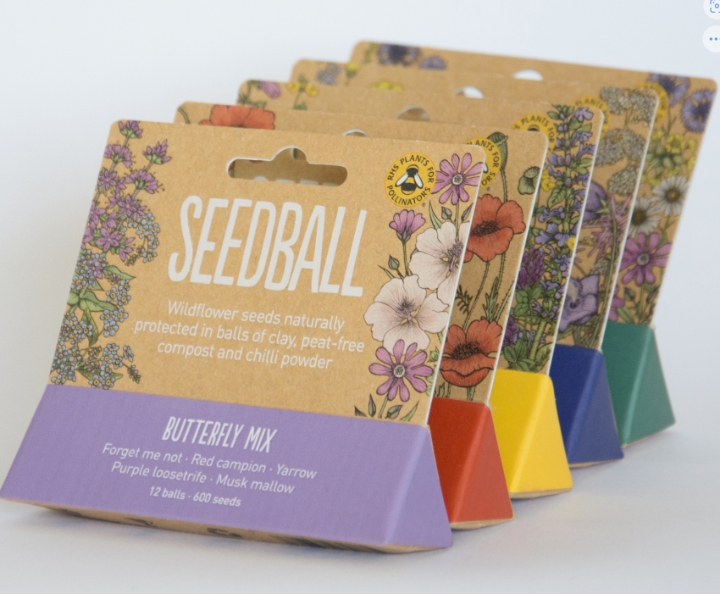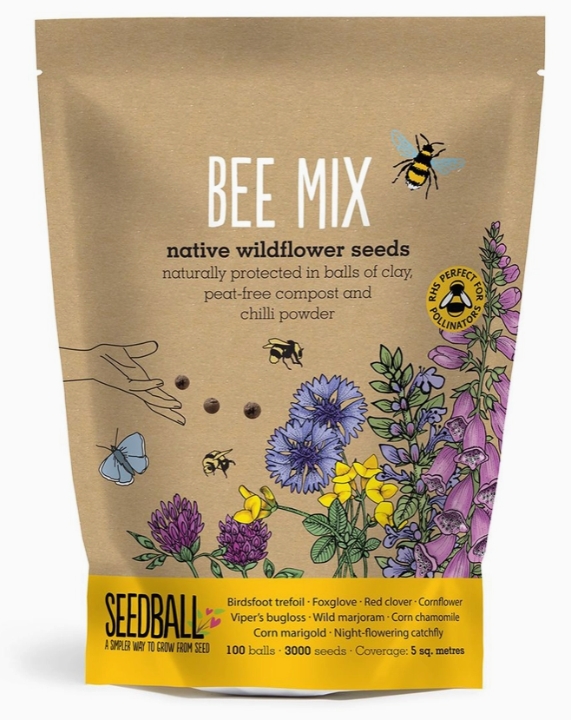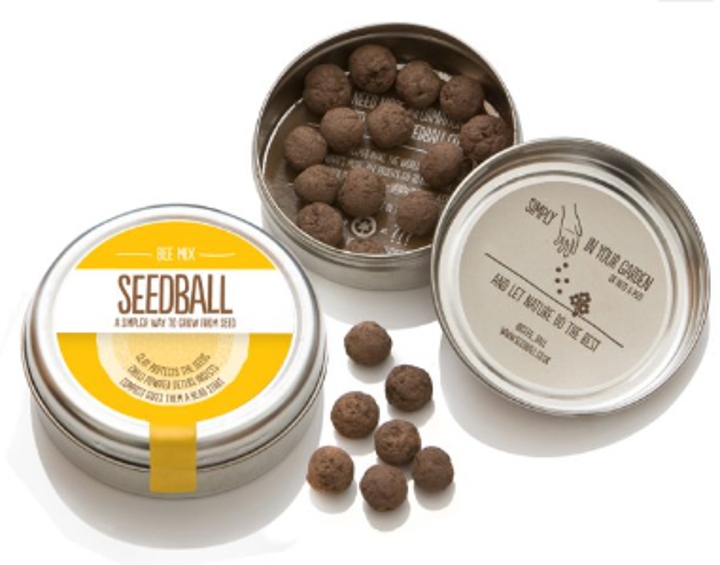Seedballs
Gardening with seedballs
Step 1: scatter onto bare soil or compost
No need to dig! As the wildflower seeds are encased in clay and peat-free compost, they are essentially already "planted". Simply scatter onto bare soil or compost (avoid scattering on grass) on a garden bed or in a pot, leaving at least 10 cm between each ball. The outer clay helps to prevent birds and insects from eating the seeds, keeping the seeds nicely protected and ensuring your bee and butterfly friendly wildflower garden has every has every chance of growing success.
Step 2: seeds germinate inside the ball and begin to sprout
With regular watering and enough sun and warmth, the wildflower seeds inside the ball will start to germinate and little sprouts will begin to appear from the ball. This process can take 4-6 weeks from scattering depending on the frequency of rainfall. It can be speeded up by watering the seedballs once or twice on dry days. We add chilli powder to our Seedball recipe to help deter slugs and snails from eating the young shoots.
Step 3: ball breaks down as plants become established
Slowly the ball will disperse and become less visible, leaving a patch of young plants which will contiue to grow into a beautiful wildflower garden.
Step 4:
Plants flower and become hub of wildlife activity
Each type of wildflower takes a different lenght of time to come into flower - some will flower in the first year and others will flower in the following year. Once in flower they will provide important habitat anf food for an abundance of garden wildlife.
Top tips:
- seedballs are thirsty! They require regular rainfall for the seeds to start to grow.Water them every day, fully drenching the balls.
- keep the area around the base of your wildflowers free of other plants and grass
- the balls shouldn't simply disappear overnight unless heavy rain has submerged them under the soil. Keep an eye out for squirrels who can sometimes have fun runnig off with the balls.
- growth inthe first few months can be naturally slow and patience is required. Once established, wildflowers are a rewarding and beautiful addition to any garden, window box or balcony.



